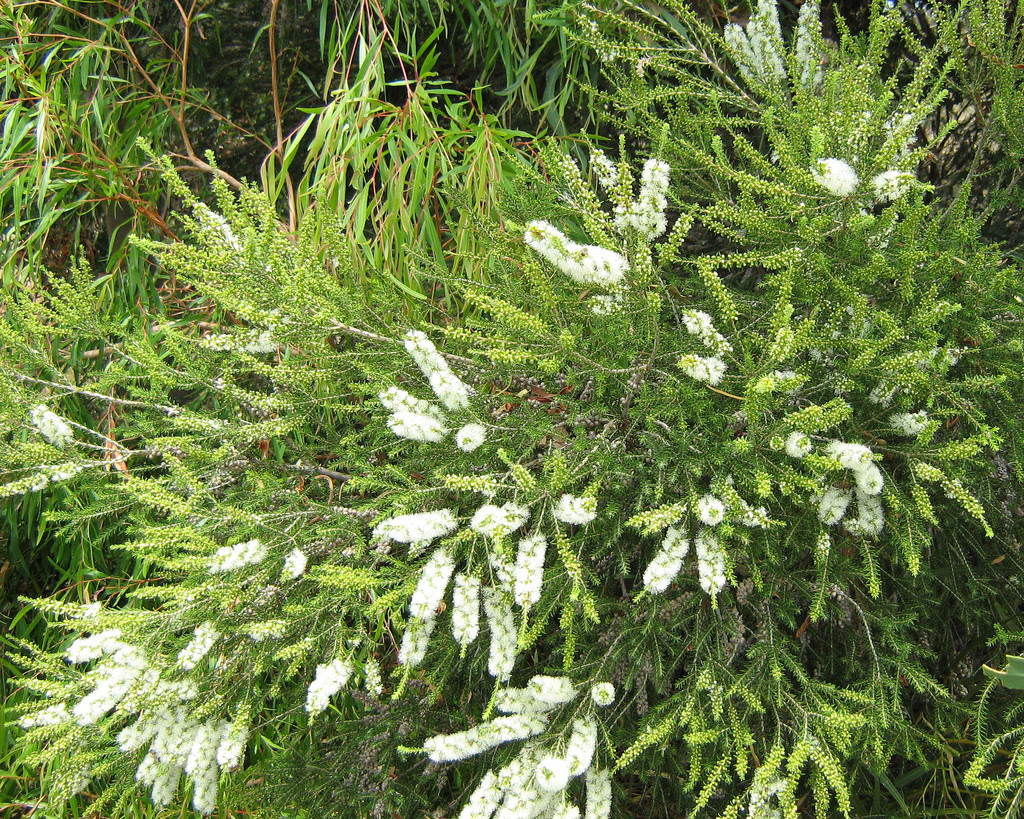Chenille honey myrtle
(Melaleuca huegelii huegelii)

Description
Melaleuca huegelii, commonly known as chenille honey-myrtle, is a plant in the myrtle family, Myrtaceae and is endemic to the south-west coastal areas of Western Australia. It has small, almost scale-like leaves and flower spikes sometimes more than 100 millimetres (4 in) long on the ends many of its branches. Melaleuca huegelii is a large shrub, sometimes a small tree up to 5 m (20 ft) tall, with dark-coloured bark and branches that are usually covered with fine, soft hairs, at least when young. Its leaves are 1.3–10 mm (0.05–0.4 in) long, 1–2.5 mm (0.04–0.1 in) wide, roughly egg-shaped and taper to a point. The flowers are white, cream-coloured or a shade of pink and arranged in spikes on the ends of branches which continue to grow after flowering and sometimes also in the upper leaf axils. The spikes are up to 100 mm (4 in) long and sometimes longer, up to 25 mm (1 in) in diameter and contain up to 140 groups of flowers in threes. The petals are 1.5–3 mm (0.06–0.1 in) long and fall off as the flowers age. The stamens are arranged in bundles of five around the flower, with 6 to 13 stamens in each bundle. Flowering occurs between August and January and is followed by fruit which are woody, cup-shaped capsules 2.3–2.8 mm (0.09–0.1 in) long and wide in clusters along the stem.
Taxonomic tree:







